You implement the planned changes for the key vaults.
To which key vaults can you restore AKV1 backups?
You are evaluating the effect of the application security groups on the network communication between the virtual machines in Sub2.
For each of the following statements, select Yes if the statement is true. Otherwise, select No.
NOTE: Each correct selection is worth one point.
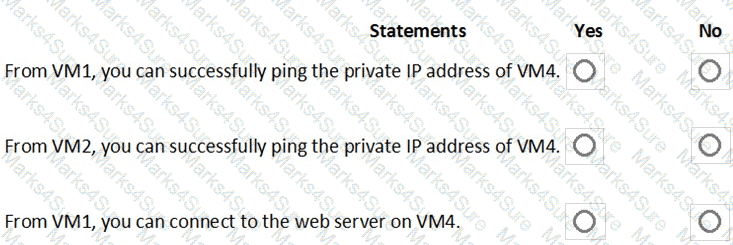
You are evaluating the security of the network communication between the virtual machines in Sub2.
For each of the following statements, select Yes if the statement is true. Otherwise, select No.
NOTE: Each correct selection is worth one point.
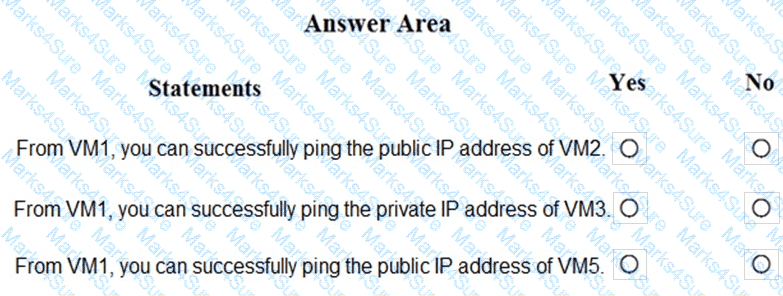
You are evaluating the security of VM1, VM2, and VM3 in Sub2.
For each of the following statements, select Yes if the statement is true. Otherwise, select No.
NOTE: Each correct selection is worth one point.

: 2 HOTSPOT
Which virtual networks in Sub1 can User2 modify and delete in their current state? To answer, select the appropriate options in the answer area.
NOTE: Each correct selection is worth one point.

What is the membership of Group1 and Group2? To answer, select the appropriate options in the answer area.
NOTE: Each correct selection is worth one point.
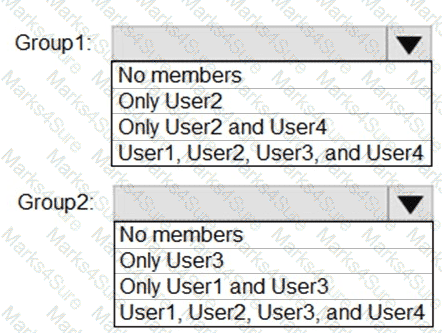
You need to encrypt storage1 to meet the technical requirements. Which key vaults can you use?
You have an Azure subscription that contains an Azure SQL server named sqlsrv1 and an Azure SQL database named DB1. Sqlsrv1 is configured for Microsoft Entra authentication only.
You have the Microsoft Entra identities shown in the following table.

Which users can create scoped credentials for DB1?
You need to delegate a user to implement the planned change for Defender for Cloud.
The solution must follow the principle of least privilege.
Which user should you choose?
You need to configure the AKS1 and ID1 managed identities to meet the technical requirements. The solution must follow the principle of least privilege.
Which role should you assign to each identity? To answer, select the appropriate options in the answer area.
NOTE: Each correct selection is worth one point.
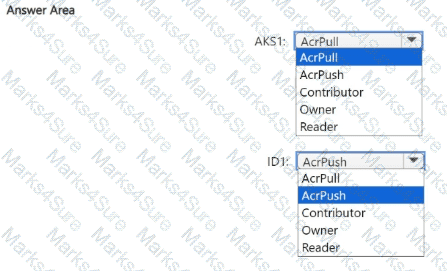
You need to deploy Microsoft Antimalware to meet the platform protection requirements.
What should you do? To answer, select the appropriate options in the answer area.
NOTE: Each correct selection is worth one point.
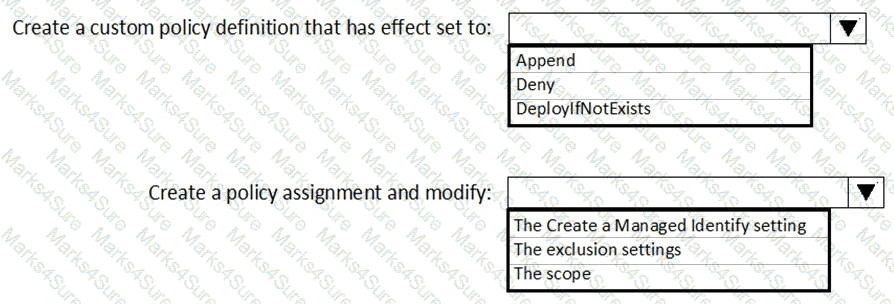
You have an Azure subscription that contains the virtual networks shown in the following table.

The subscription contains the virtual machines shown in the following table.

On NIC1, you configure an application security group named ASG1.
On which other network interfaces can you configure ASG1?
You have the Azure Information Protection conditions shown in the following table.
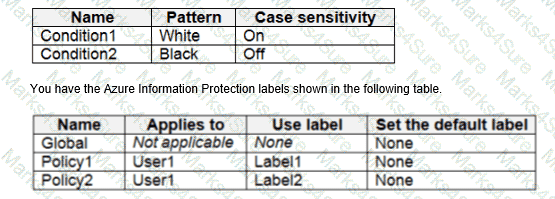
You need to identify how Azure Information Protection will label files.
What should you identify? To answer, select the appropriate options in the answer area.
NOTE: Each correct selection is worth one point.
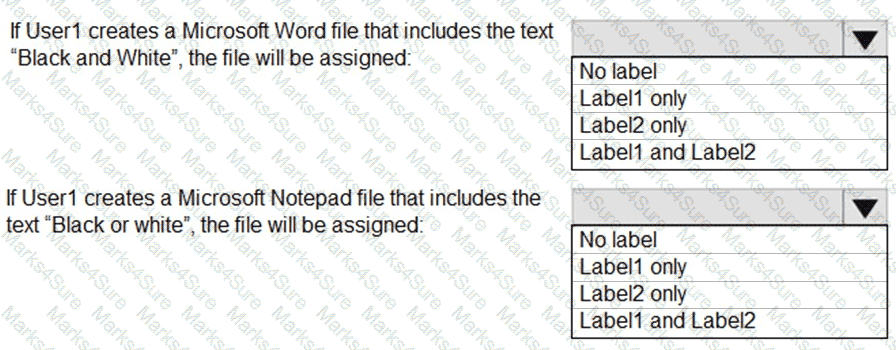
You need to implement the planned change for VM1 to access storage1.
The solution must meet the technical requirements.
What should you do first?
You need to implement the planned change for SQLdb1.
Which two actions should you perform? Each correct answer presents part of the solution.
NOTE: Each correct selection is worth one point.
You need to implement the planned change for WAF1.
The solution must minimize administrative effort
What should you do?
You need to deploy AKS1 to meet the platform protection requirements.
Which four actions should you perform in sequence? To answer, move the appropriate actions from the list of actions to the answer area and arrange them in the correct order.
NOTE: More than one order of answer choices is correct. You will receive credit for any of the correct orders you select.
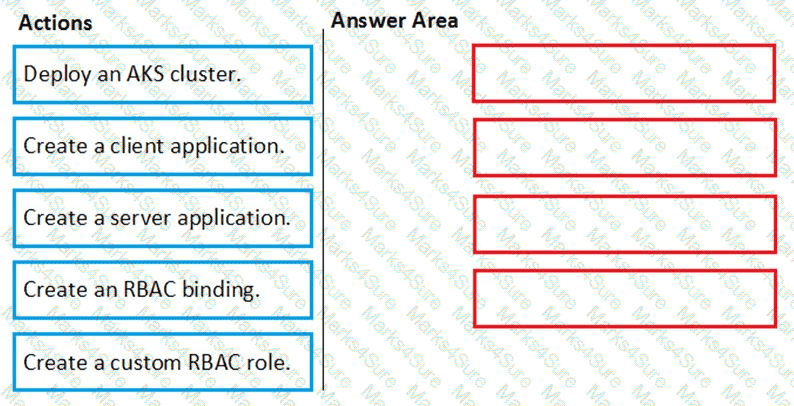
You need to recommend an encryption solution for the planned ExpressRoute implementation. The solution must meet the technical requirements.
Which ExpressRoute circuit should you recommend for each type of encryption? To answer, select the appropriate options in the answer area.
NOTE: Each correct selection is worth one point.
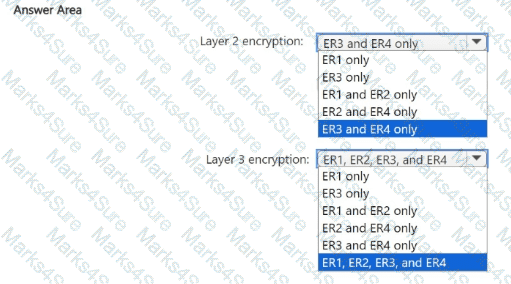
You need to create Role1 to meet the platform protection requirements.
How should you complete the role definition of Role1? To answer, select the appropriate options in the answer area.
NOTE: Each correct selection is worth one point.
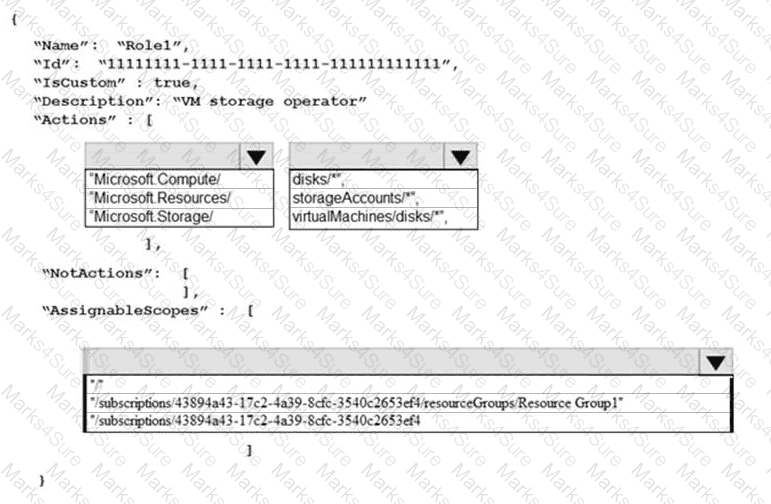
You need to ensure that the Azure AD application registration and consent configurations meet the identity and access requirements.
What should you use in the Azure portal? To answer, select the appropriate options in the answer area.
NOTE: Each correct selection is worth one point.
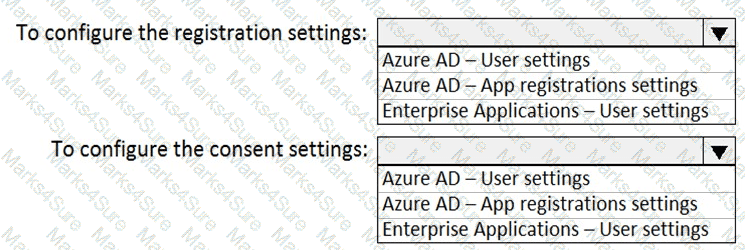
You need to configure WebApp1 to meet the data and application requirements.
Which two actions should you perform? Each correct answer presents part of the solution.
NOTE: Each correct selection is worth one point.
You need to meet the identity and access requirements for Group1.
What should you do?
You need to ensure that you can meet the security operations requirements.
What should you do first?
You need to configure support for Azure Sentinel notebooks to meet the technical requirements.
What is the minimum number of Azure container registries and Azure Machine Learning workspaces required?

You have an Azure Sentinel workspace that has an Azure Active Directory (Azure AD) data connector.
You are threat hunting suspicious traffic from a specific IP address.
You need to annotate an intermediate event stored in the workspace and be able to reference the IP address when navigating through the investigation graph.
Which three actions should you perform in sequence? To answer, move the appropriate actions from the list of actions to the answer area and arrange them in the correct order.
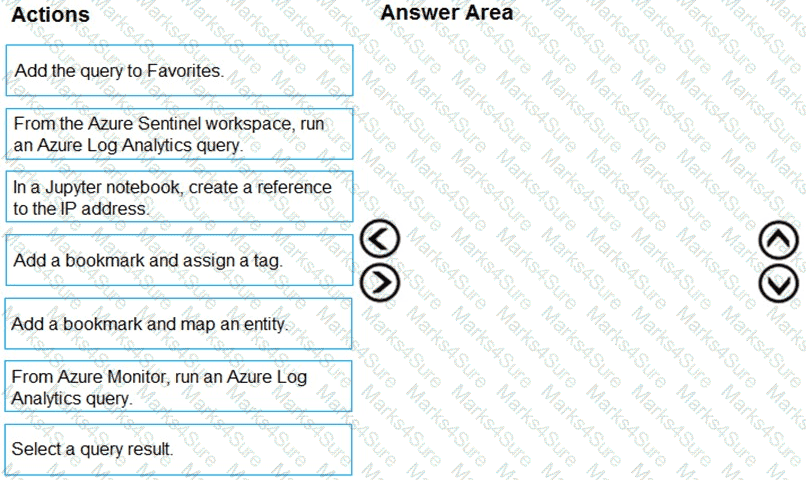
You need to meet the technical requirements for the finance department users.
Which CAPolicy1 settings should you modify?
You implement the planned changes for ASG1 and ASG2.
In which NSGs can you use ASG1. and the network interfaces of which virtual machines can you assign to ASG2?

You need to perform the planned changes for OU2 and User1.
Which tools should you use? To answer, drag the appropriate tools to the correct resources. Each tool may be used once, more than once, or not at all. You may need to drag the split bar between panes or scroll to view content.
NOTE: Each correct selection is worth one point.

You plan to configure Azure Disk Encryption for VM4. Which key vault can you use to store the encryption key?
You need to ensure that users can access VM0. The solution must meet the platform protection requirements.
What should you do?
You need to configure SQLDB1 to meet the data and application requirements.
Which three actions should you recommend be performed in sequence? To answer, move the appropriate actions from the list of actions to the answer area and arrange them in the correct order.
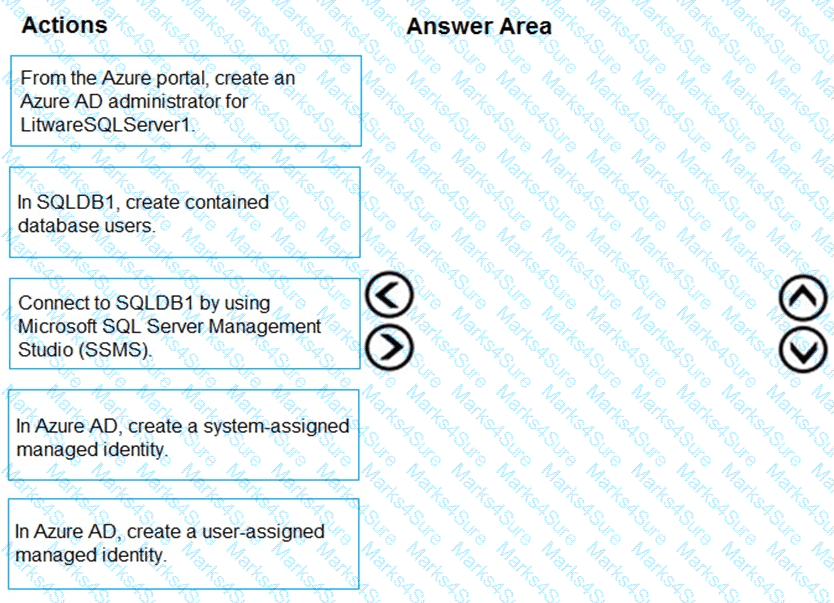
You need to delegate the creation of RG2 and the management of permissions for RG1. Which users can perform each task? To answer select the appropriate options in the answer area. NOTE: Each correct selection is worth one point
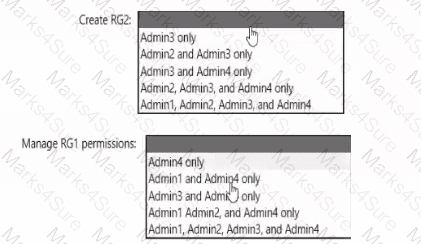
From Azure Security Center, you need to deploy SecPol1.
What should you do first?